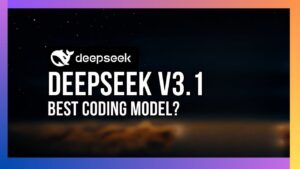Exploration of DeepSeek by Western Companies

The Impact of DeepSeek’s R1 AI Model
Overview of the R1 AI Model
Two months after its launch, DeepSeek’s R1 AI model has generated significant buzz in the technology community. This powerful open-source artificial intelligence tool has astonished experts and even led to fluctuations in American tech stocks earlier this year.
Key Features of the R1 AI Model
Open-Source Accessibility: Unlike many other AI models that are proprietary, R1 is open-source. This allows developers and researchers worldwide to access, modify, and improve the model freely.
Advanced Capabilities: R1 has been developed to handle complex tasks efficiently, establishing itself as a leading option among AI platforms. Its design allows for a range of applications across different industries.
- Continuous Improvement: The model benefits from input from a global community of developers who contribute to its ongoing refinement and enhancement.
Global Reach and Adoption
Rapid Growth in China
In China, the adoption of the R1 model has been remarkable. Developers and businesses have rapidly integrated it into their systems, enhancing their capabilities and fostering innovation. The model’s performance has prompted a wave of interest from startups and established companies alike, looking to leverage its strengths.
Expanding Beyond Borders
The influence of the R1 model is not confined to China; it has started to make an impact worldwide. Companies in various sectors, including healthcare, finance, and education, are beginning to experiment with R1 to streamline operations and improve their services.
Comparison with Other AI Models
As of now, R1 stands out among its competitors in the AI landscape. Here are some aspects that set it apart:
Performance: R1 consistently outperforms other open-source models in benchmarks, making it a preferred choice for many developers and researchers.
Community Engagement: The collaborative nature of its development fosters a community of users who continuously contribute to its improvement. This collective effort enhances the model’s capabilities far more rapidly than traditional development approaches.
- Versatility: R1’s design permits its application in diverse domains, making it a versatile tool for various industries.
Future Prospects for AI Development
The success of DeepSeek’s R1 model indicates a growing trend toward open-source AI tools. As more organizations recognize the benefits of such models, there is likely to be an increase in collaborative efforts and development within this sector.
Increased Collaboration: The rise of open-source models like R1 fosters an environment of cooperation among developers. The potential for shared resources and knowledge can lead to faster technological advancements.
- Broader Applications: As the model evolves, it will likely find new uses in areas such as data analysis, machine learning applications, and automation. This expansion can significantly influence the industries it permeates.
Challenges Ahead
Despite its enormous potential, the adoption of R1, like other AI technologies, comes with its own set of challenges:
Ethical Considerations: With advancements in AI come ethical challenges, such as data privacy and biases in AI decision-making processes. These issues must be addressed to ensure responsible usage of AI technologies.
Competition: While R1 is currently leading the field, it faces competition from other emerging AI models. Continuous innovation is vital for maintaining its position as the top open-source AI tool.
- Technical Barriers: Not all organizations may have the technical expertise required to implement and leverage the full potential of R1, which can hinder its widespread adoption.
In summary, DeepSeek’s R1 AI model represents a significant advancement in the field of artificial intelligence. Its open-source nature, combined with impressive performance and growing global interest, marks it as a pivotal development in the ongoing evolution of AI technologies.






